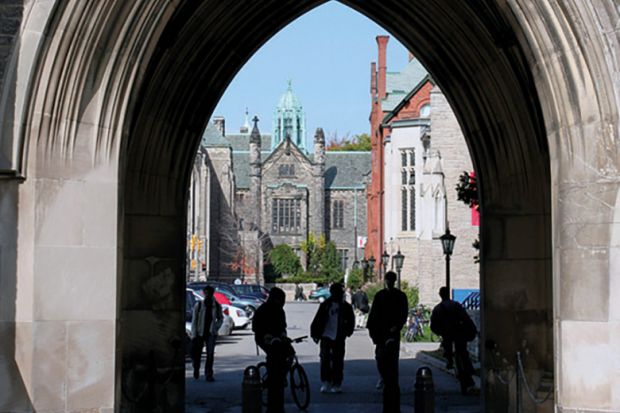Ontario has decided to handle a sharp reduction in international student visas by directing nearly its entire federal allotment to the public colleges and universities in Canada’s most populous province, largely shutting out its private institutions.
The government of Premier Doug Ford announced the decision one day after it estimated that the loss of overseas students – who pay disproportionately high tuition rates – would cost Ontario about C$3 billion (£1.8 billion) in revenue, driving the province’s budgetary deficit to nearly C$10 billion.
The Ford administration’s minister of colleges and universities, Jill Dunlop, said in announcing the visa allocation plan that it was driven by economic necessity. “We have been working with post-secondary institutions to ensure international students are enrolled in the programmes to support a pipeline of graduates for in-demand jobs,” Ms Dunlop said.
Under the plan, Ontario will give 96 per cent of its student permit applications to its public institutions. The province’s private universities and language schools will share the remaining 4 per cent, and its career-oriented private colleges will be left out.
The decision draws a contrast with many other provinces. British Columbia, which has the second-largest share of post-secondary institutions after Ontario, split its allocation of student visa applications nearly evenly between its public and private campuses.
Canada has long cultivated a reputation as a leading destination for international students, which in turn has let it heavily subsidise its post-secondary system for domestic students. But the Trudeau administration, after a few months of warnings, announced in January that it planned to reduce student visas by 35 per cent over the coming two years, due to institutions taking outsized advantage of the opportunity, which has exacerbated housing crises in cities around the country.
Ontario’s universities expressed relief that the severity of the plan might not be as bad for them as it originally appeared. The Ford administration said its allocation means that 22 of 23 Ontario universities will keep their student visa applications at their 2023 levels, with only the indigenous-focused Algoma University facing a decline. It said that 11 of the province’s 24 colleges will keep their visa applications at their 2023 levels.
The Ford administration’s decision “means universities in Ontario can continue to attract the best and the brightest talent from across the globe”, the Council of Ontario's Universities, representing about 20 leading public institutions, said in a statement. “However, the decision to cap international undergraduate allocations at 2023 levels will restrict the ability for universities to modestly increase enrolment, which will exacerbate financial pressures on the sector.”
Ontario’s public universities include Canada’s highest-ranked institution, the University of Toronto, plus McMaster University, Western University and the University of Waterloo.
Career Colleges Ontario, the association representing about 280 workforce-oriented institutions, offered no immediate response, although in the past it has defended the value of its members to the nation’s economy and protested suggestions that those operations were disproportionately responsible for surges in foreign-student enrolment.
As part of its plan, the Ford administration said it was taking additional steps that included requiring all public colleges and universities to guarantee housing options for all incoming international students, and boosting spending on college student mental health.
Register to continue
Why register?
- Registration is free and only takes a moment
- Once registered, you can read 3 articles a month
- Sign up for our newsletter
Subscribe
Or subscribe for unlimited access to:
- Unlimited access to news, views, insights & reviews
- Digital editions
- Digital access to THE’s university and college rankings analysis
Already registered or a current subscriber? Login








